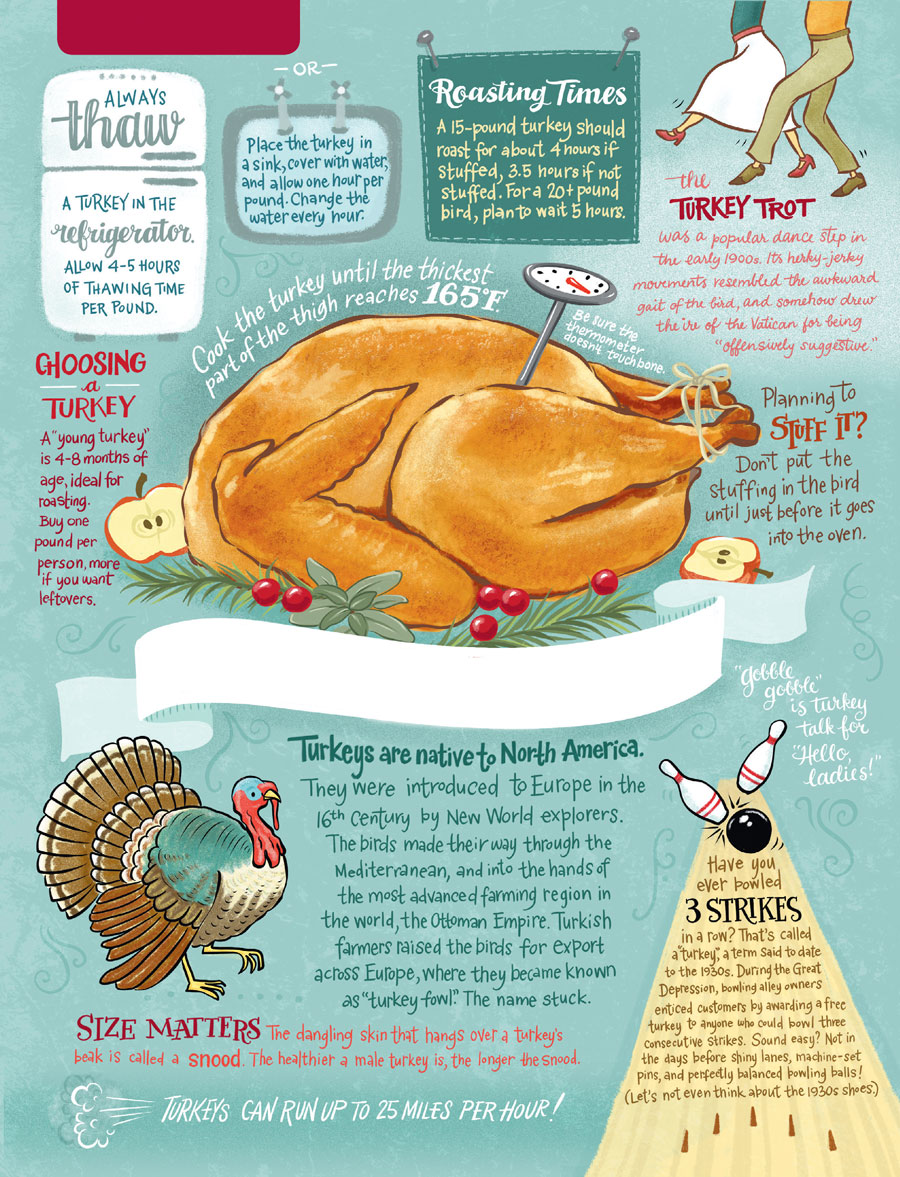Talk Turkey to Me

Always thaw: a turkey in the refrigerator. Allow 4-5 hours of thawing time per pound.
-or-
Place the turkey in a sink, cover with water, and allow one hour per pound. Change the water every hour.
Roasting Times
A 15-pound turkey should roast for about 4 hours if stuffed, 3.5 hours if not stuffed. For a 20+ pound bird, plan to wait 5 hours.
The Turkey Trot was a popular dance step in the early 1900s. Its herky-jerky movements resembled the awkward gait of the bird, and somehow drew the ire of the Vatican for being “offensively suggestive.”
Choosing a Turkey
A “young turkey” is 4-8 months of age, ideal for roasting. Buy one pound per person if you want leftovers.
Cook the turkey until the thickest part of the thigh research 165 degrees farenheit. Be sure the thermometer doesn’t touch bone.
Planning to stuff it? Don’t put the stuffing in the bird until just before it goes into the oven.
“Gobble gobble” is turkey talk for “Hello, ladies!”
Turkeys are native to North America. They were introduced to Europe in the 16th century by New World explorers. The birds made their way through the Mediterranean, and into the hands of the most advanced farming region in the world, the Ottoman Empire. Turkish farmers raised the birds for export across Europe, where they became known as “turkey fowl.” The name stuck.
Size Matters
The dangling skin that hangs over a turkey’s beak is called a snood. The healthier a male turkey is, the longer the snood.
Turkeys can run up to 25 miles per hour!
Have you ever bowled 3 strikes in a row? That’s called a “turkey,” a term said to date to the 1930s. During the Great Depression, bowling alley owners enticed customers by award a free turkey to anyone who could bowl three consecutive strikes. Sound easy? Not in the days before shiny lanes, machine-set pins, and perfectly balanced bowling balls! (Let’s not even think about the 1930s shoes.)




